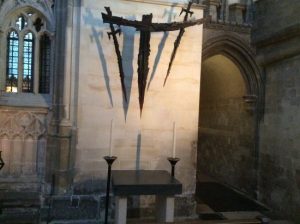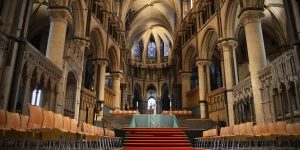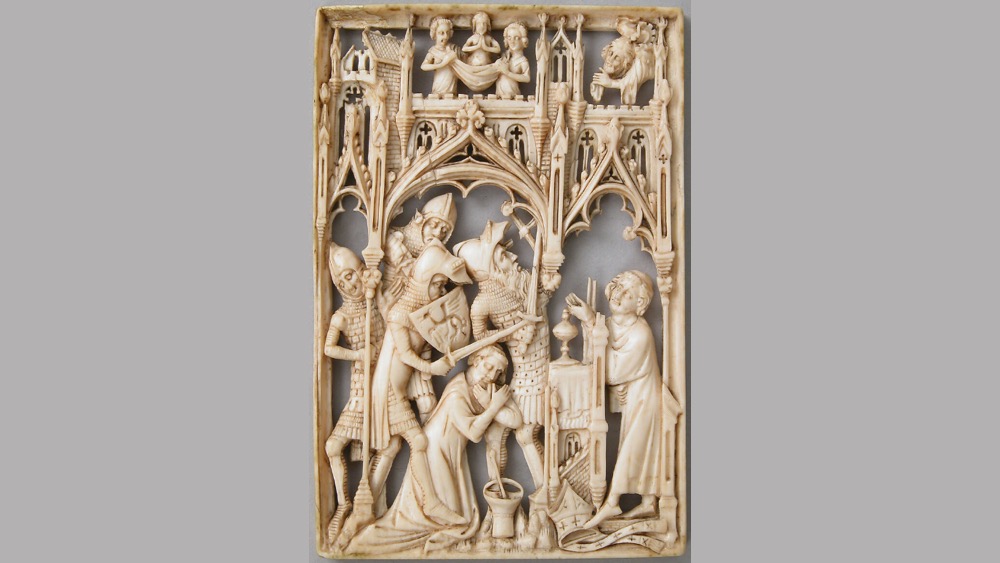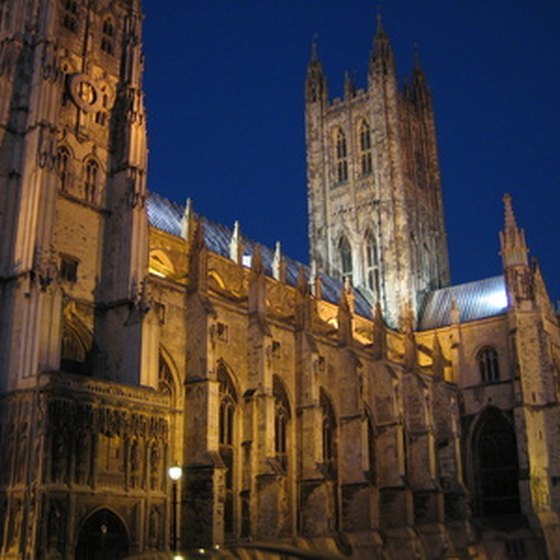On the Fifth Day of Christmas, The Feast of Thomas a’ Becket
On the 5th Day of Christmas
Feast of St. Thomas a’ Becket, a memorial
One of the overarching issues of the Medieval world was where the authority of the Papacy ended and the authority of kings began. It was a dispute that that led to the martyrdom of Thomas a’ Becket, Archbishop of Canterbury, and the humbling of King Henry II before the Church.
Thomas a’ Becket was born into 12th century England. As Chancellor to King Henry II, he came to be a close confidant of the King. He even accompanied the King to war, reportedly acquitting himself well in battle.
In 1161, the King was in a dispute with the papacy and the clerics in England over Royal authority to try any clergy who committed secular crimes in his secular Royal courts. The Papacy claimed sole jurisdiction to try clergy in ecclesiastic Courts. The dispute was still unresolved when the highest ranking cleric in Britain, the Archbishop of Canterbury, died. Henry II convinced Becket to take vows and arranged for his appointment to the position of Archbishop.
Unwillingly, Becket did as he was asked. But then Becket had an epiphany and became deeply pious. To Henry’s chagrin, Becket became a defender of papal authority in the dispute. Becket was intransigent, even going so far as to excommunicate other English bishops who supported Henry on the issue. Henry, in a rage, famously asked “Who will rid me of this troublesome priest?”
 Four of Henry’s knights overheard Henry’s remark and took it upon themselves to do just that. Traveling to Canterbury on this date in 1170, with their weapons in hand, they confronted Becket and demanded he lift the excommunications. When Becket refused, it was soon clear beyond doubt that he would be killed. Moments after Becket “commended himself and the cause of the Church to God, St. Mary, and the blessed martyr St. Denis,” his assassins put him to the sword, spilling his brains on the Cathedral floor.
Four of Henry’s knights overheard Henry’s remark and took it upon themselves to do just that. Traveling to Canterbury on this date in 1170, with their weapons in hand, they confronted Becket and demanded he lift the excommunications. When Becket refused, it was soon clear beyond doubt that he would be killed. Moments after Becket “commended himself and the cause of the Church to God, St. Mary, and the blessed martyr St. Denis,” his assassins put him to the sword, spilling his brains on the Cathedral floor.
 Much of the medieval world erupted in horror at Becket’s murder and blamed King Henry II. Pilgrimages to Becket’s tomb in Canterbury Cathedral followed soon thereafter with numerous miracles occurring that were attributed to Becket. The Church canonized Becket in 1173. King Henry II to make peace with the papacy, dropped his attempts to try priests in the Royal courts, promised to go on a Crusade, and presented himself at the tomb of Becket to make public penance, allowing himself to be symbolically scourged by the local clerics.
Much of the medieval world erupted in horror at Becket’s murder and blamed King Henry II. Pilgrimages to Becket’s tomb in Canterbury Cathedral followed soon thereafter with numerous miracles occurring that were attributed to Becket. The Church canonized Becket in 1173. King Henry II to make peace with the papacy, dropped his attempts to try priests in the Royal courts, promised to go on a Crusade, and presented himself at the tomb of Becket to make public penance, allowing himself to be symbolically scourged by the local clerics.
Canterbury became the third most visited site of pilgrimage in all of Europe.
The first great work of literature composed in English, Chaucer’s “Canterbury Tales,” is set against the backdrop of travelers on a pilgrimage to Becket’s shrine. St. Thomas is, today, the patron saint of priests.


